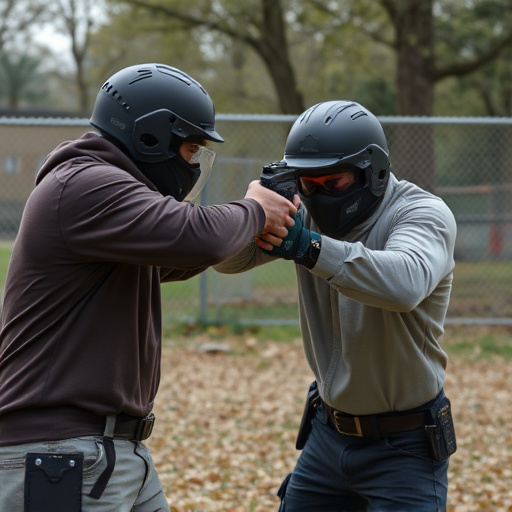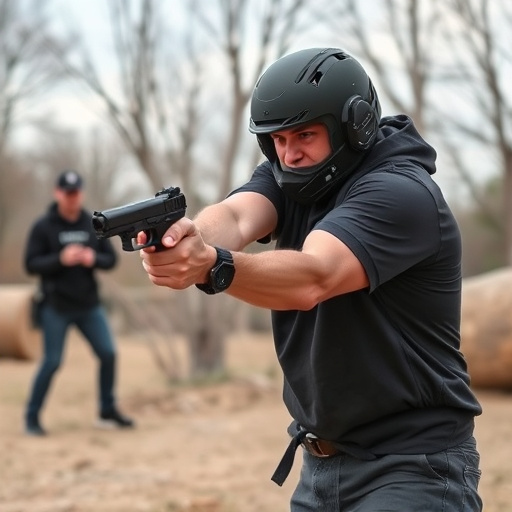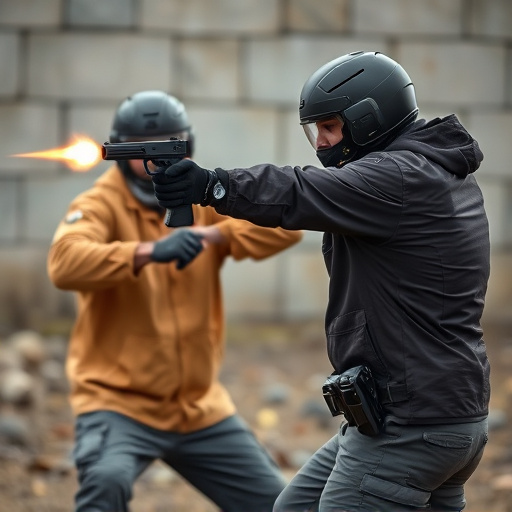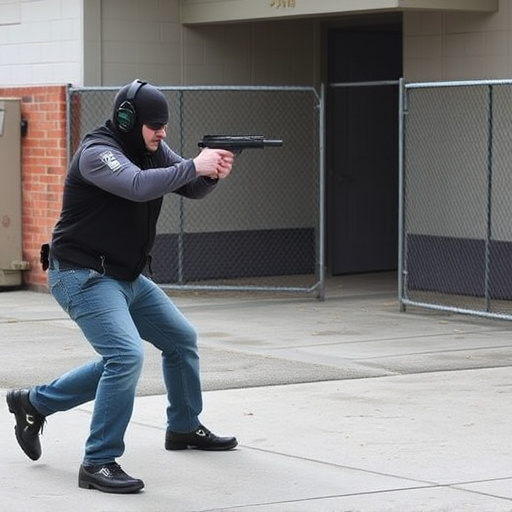Concealable stun guns designed for women's self-defense rely on controlled electrical current to temporarily incapacitate attackers. Understanding current flow, influenced by factors like conductivity, temperature, and charged presence, is vital for both device performance and user safety. These compact, lightweight tools leverage advanced electrical circuitry and optimized current spread patterns to deliver effective protection without causing widespread shock, appealing to those seeking discreet self-defense options. Key considerations in design include ensuring safety, effectiveness, and minimal visibility, making these stun guns popular choices for women prioritizing personal security.
Electrical current spread patterns are fascinating yet complex topics, especially in the context of concealable stun guns designed for women’s personal safety. This article delves into the science behind these compact and powerful defense tools. We explore how electric current flows and visualizes its spread, examining factors that influence these patterns. From understanding basic electrical behavior to analyzing specific design considerations in concealable stun guns, this guide offers insights into both theory and practical applications while highlighting safety protocols.
- Understanding Electrical Current and Its Behavior
- The Science Behind Stun Guns: A Brief Overview
- Concealable Stun Guns for Women: An Analysis of Their Design
- How Electric Current Spreads: A Visual Representation
- Factors Influencing Current Spread Pattern
- Practical Applications and Safety Considerations
Understanding Electrical Current and Its Behavior

Electrical current, a fundamental concept in physics and engineering, is the flow of electrons through a conductive medium. This invisible force plays a crucial role in various technologies we interact with daily, from powering our homes to enabling advanced medical devices. When it comes to understanding how electricity behaves, especially in unique scenarios like Concealable Stun Guns for Women, knowing its spread patterns is essential for safety and effectiveness.
The behavior of electrical current isn’t always straightforward. It can be influenced by factors such as the material’s conductivity, temperature, and even the presence of other charges. In the context of stun guns, understanding how current spreads through different body parts and materials can impact the device’s performance and reduce potential risks. This knowledge is critical for designers and users to ensure the technology is both effective in self-defense scenarios and safe to use.
The Science Behind Stun Guns: A Brief Overview

Stun guns, also known as electronic control devices (ECDs), are designed to temporarily incapacitate a target through the use of electrical current. The science behind their operation involves delivering a high-voltage, low-current electric shock that disrupts the nervous system’s normal function, causing muscle spasm and loss of balance. This rapid and powerful reaction is achieved by using a small battery to power an electronic circuit that generates a controlled electrical discharge.
In the context of Concealable Stun Guns for Women, these devices are often compact, lightweight, and designed to be easily hidden or carried, making them appealing as personal safety tools. They operate on the principle of delivering a strong electric shock at close range—typically within 2-3 feet—to render an assailant temporarily immobilized. This allows the user time to escape or summon help, offering a swift and effective means of self-defense in various situations.
Concealable Stun Guns for Women: An Analysis of Their Design

Concealable stun guns designed for women are a specialized type of personal defense device, offering a discrete solution for self-protection. These weapons are crafted with a unique set of considerations compared to traditional stun guns. Their design often emphasizes compactness and concealment, allowing users to carry them effortlessly while maintaining a low profile. This is particularly appealing to women who may prefer a less obtrusive self-defense option that can be easily hidden or carried as a fashion accessory.
The spread pattern of electrical current in these devices plays a crucial role in their effectiveness. Concealable stun guns typically utilize smaller electrodes and advanced circuit designs to ensure the energy is delivered in a controlled manner over a localized area. This focused delivery allows for a powerful stun without causing wide-spread shock, enhancing the device’s concealability. By analyzing the current spread pattern, manufacturers can optimize the stun gun’s performance, ensuring it meets specific safety and effectiveness standards while maintaining its discreet nature—a critical aspect of their target market’s appeal.
How Electric Current Spreads: A Visual Representation

Electric current spreads through a conductive material, such as metal or even human tissue, in a visually captivating manner. This process can be likened to a wave of energy moving through a fluid, with each atom and molecule playing a part in its propagation. When an electric charge is applied at one point, it creates a field that interacts with nearby particles, setting off a chain reaction. This phenomenon is evident when observing the bright glow or visible spark produced by a Concealable Stun Gun for Women during activation—it visually represents the rapid movement and spread of current through the conductive path.
The visual representation of electric current often reveals intricate patterns, depending on factors like conductivity, resistance, and the shape of the conductor. For instance, in low-resistance materials or narrow wires, current tends to flow uniformly, forming a steady, bright trail. Conversely, higher resistance areas may exhibit localized hotspots, creating a dynamic and ever-changing visual display. Understanding these spread patterns is crucial for various applications, from designing efficient electrical systems to ensuring safety measures, especially with devices like stun guns that utilize electric current as their primary mechanism of action.
Factors Influencing Current Spread Pattern

The spread pattern of electrical current is influenced by a multitude of factors, each playing a crucial role in shaping the path and intensity of the flow. When considering Concealable Stun Guns for Women, understanding these factors becomes essential to ensure their effective deployment. The resistance of the pathway, determined by the conductor’s material and dimensions, significantly impacts current flow. Thinner wires or conductors with higher resistivity will restrict current flow, causing it to dissipate more quickly.
Furthermore, the presence of insulators or dielectrics in the circuit can alter current distribution. These materials, often used in stun gun designs, serve to contain and guide electrical energy but can also cause current to spread laterally due to capacitive coupling. Other factors like temperature and surrounding materials also come into play. Heat generated by current flow can change resistance, while conductive or insulating substances nearby may influence the direction and intensity of the electric field, thereby affecting the overall current spread pattern.
Practical Applications and Safety Considerations

In the practical application of electrical current spread pattern analysis, understanding how electricity moves through various mediums is instrumental in numerous fields, including self-defense strategies for women considering Concealable Stun Guns. By studying these patterns, professionals can design more effective stun devices that deliver precise and powerful jolts while minimizing collateral damage to surrounding tissues. This ensures the safety of users and bystanders alike.
Safety considerations are paramount when dealing with electrical current. Accurate knowledge of current spread allows for the development of safety protocols and equipment that protect individuals from accidental shocks. In the context of Concealable Stun Guns, this translates into features designed to prevent unintended activation and reduce the risk of harm during use, making them more reliable and user-friendly tools for personal safety.
In conclusion, understanding how electrical current spreads is crucial in evaluating the effectiveness of concealable stun guns designed specifically for women. The analysis of these devices, including their unique design features and safety considerations, highlights the importance of factoring in current spread patterns. By delving into the science behind stun guns and considering various influencing factors, we can better navigate the world of self-defense tools, ensuring both efficiency and user safety. Concealable stun guns for women represent a game-changer in personal protection, leveraging the power of electric current to deter potential threats.
